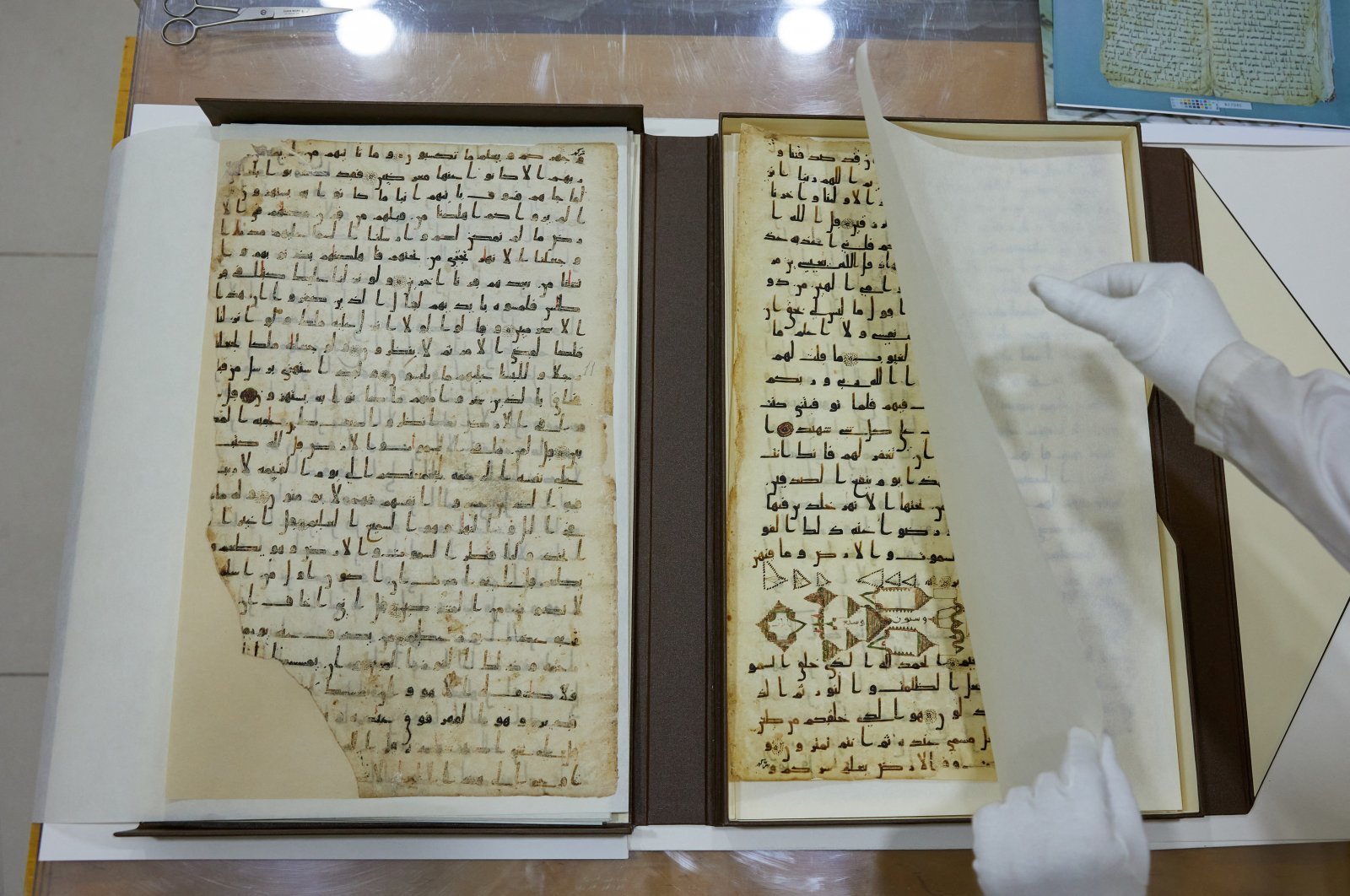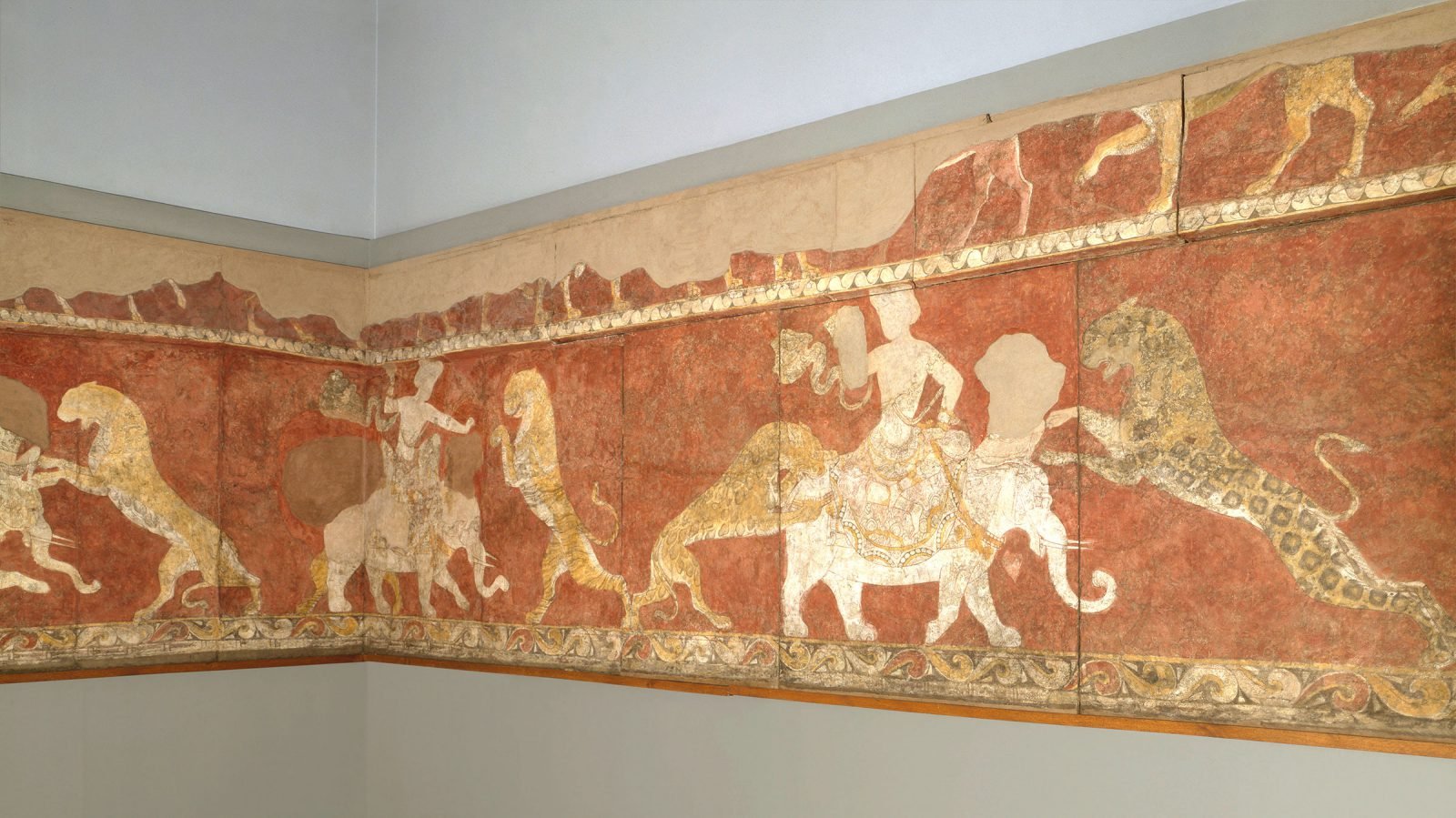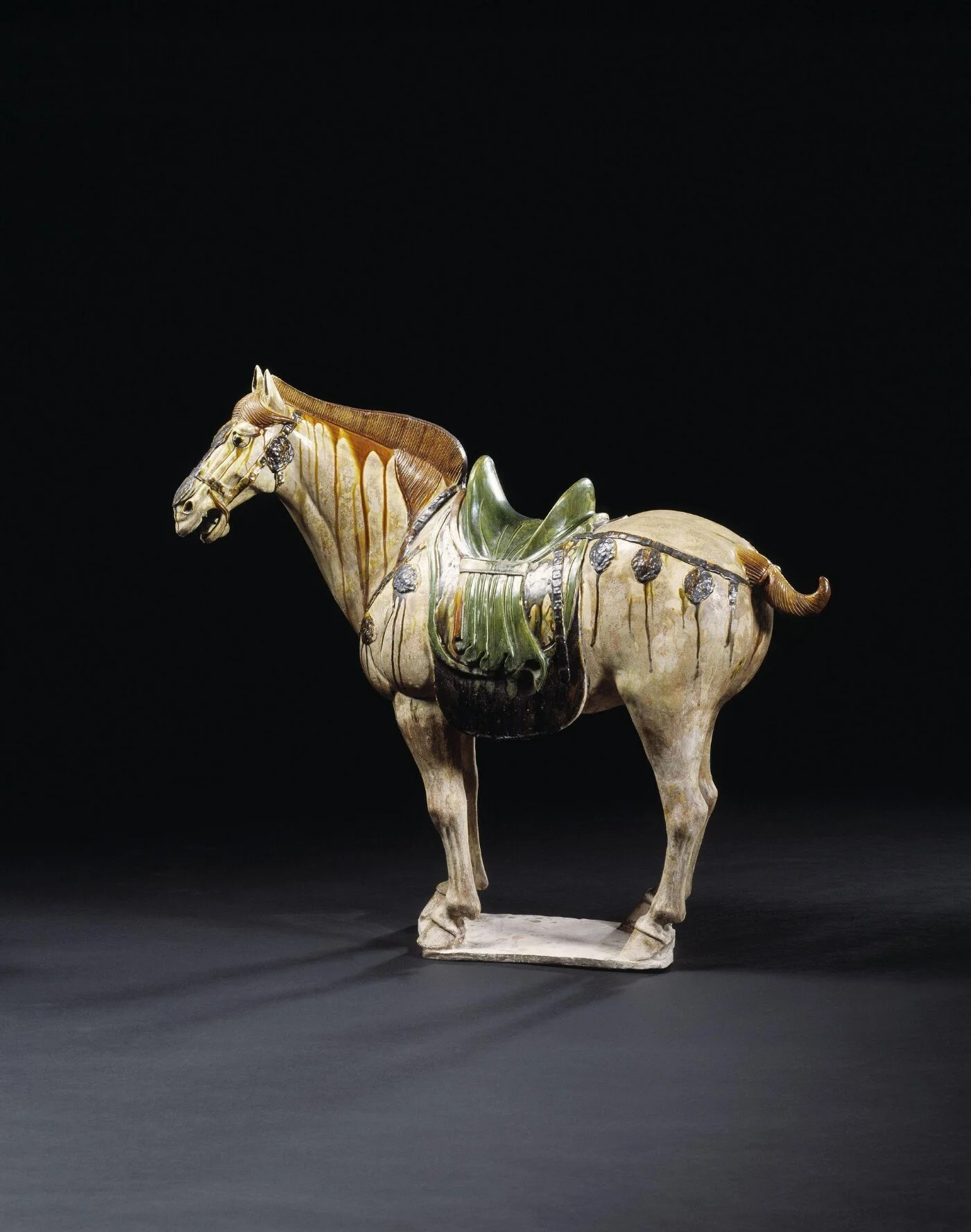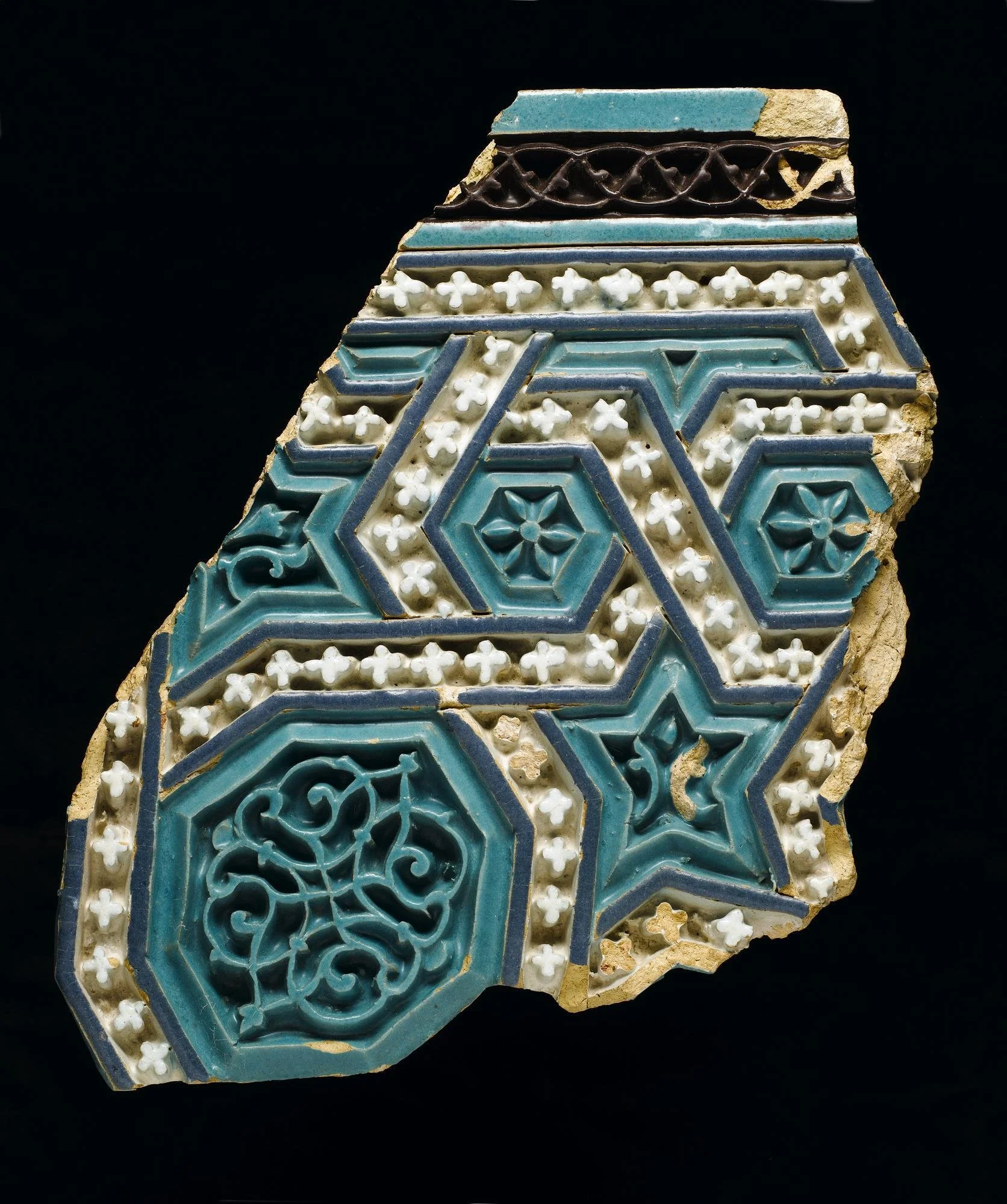Uzbekistan’s Art and History: November Pick of the Month
Uzbekistan is a country not well-known to many outsiders. It is doubly landlocked, meaning it is surrounded only by landlocked countries (Kazakhstan, Kyrgyzstan, Tajikistan, Afghanistan and Turkmenistan), and for most of the 20th century it was part of the Soviet republic). Although today 96.2% of its population is Muslim, historically it has also been home to a range of religions and ideologies, from Zoroastrianism and Buddhism to Communism in the 20th century. A big part of what makes Uzbekistan’s history so rich is its location on the ancient trade route between China and the Mediterranean, known as the Silk Road. It was a boiling pot of cultural exchange, particularly in its legendary cities Bukhara and Samarkand, which became extremely wealthy cities as a result. Uzbekistan has been a source of fascination for centuries, from Alexander the Great to the caliphs of Baghdad. The artworks which were produced there over a period of nearly two millennia are beautiful and remarkable, and deserve to be seen by as many people as possible.
Later this month, two major exhibitions about Uzbekistan’s cultural heritage will open in Paris: The Splendours of Uzbekistan’s Oases at the Louvre, and The Road to Samarkand, the Colors and Splendor of Uzbekistan at the Arab World Institute. Visitors to the exhibitions will delve into the history of Uzbekistan over a period of nearly 16 centuries, and will learn about its significant role in a global cultural context. Uzbekistan - a Central Asian nation and former Soviet republic - was historically linked to the ancient trade route between China and the Mediterranean, known as the Silk Road. As a hotspot for cultural exchange, it has been a source of fascination for centuries, from Alexander the Great to the caliphs of Baghdad. Saida Mirziyoyeva, deputy chairwoman of the Council of the Art and Culture Development Foundation of the Republic of Uzbekistan, has explained that the exhibitions will “provide a multifaceted view of the culture and art of Uzbekistan, demonstrating the unique heritage of our country in the global cultural context… Uzbekistan has always been the site for cultural exchange and trade, making the Silk Road, in a sense, the first global economic project”.





The Louvre’s exhibition alone will bring together nearly 180 works (spanning from the pre-Islamic period to the Timurid era), 138 of which are leaving Uzbekistan on loan for the first time. These include one of the oldest monumental Qurans from the early days of Islam from Katta Langar in Sogdiana, and huge wall paintings from the Ambassadors’ Hall in Samarkand, a major Uzbekistan city which is among the oldest continuously inhabited cities in Central Asia. Visitors will also be able to see several masterpieces from 16th-century miniature paintings of the School of Bukhara (telling the history of the era of the Bukhara Emirate), as well as a copy of Marco Polo’s 14th-century book which include stories about his travels in Asia. The Institute of the Arab World’s exhibition will be dedicated to Uzbek textiles and national costumes, displaying a remarkable range of embroideries, silverware, woodcarving, and much more.
At both exhibitions, the exhibition spaces will also play an important role in engaging visitors with the history of the art on display. Yannick Lintz, the director of the Islamic Arts Department at the Louvre and the exhibition’s curator, explains that “we are developing scenography and an immersive space depicting the main sights of Samarkand and Varaksha.” Similarly, Yaffa Assouline, general curator of the exhibition at the Arab World Institute, says that their design of the exhibition was intended to “completely immerse the visitors in a historical atmosphere – with chapans, antique jewellery and carpets… We hope that for every visitor this exhibition will be an opportunity to virtually visit Uzbekistan”.
Most of us will probably not be lucky enough to visit the exhibitions in person in Paris, so we have put together a selection of artworks and artefacts from Uzbekistan which may be on display in a museum near you.
If you can only get to things online…
If you’re in the United Kingdom…
If you’re in the United States…
Keep in touch with us on Instagram @athenaartfoundation and let us know what you think of this November Pick of the Month!
(Written by Esme Garlake on behalf of Athena Art Foundation, November 2022)











